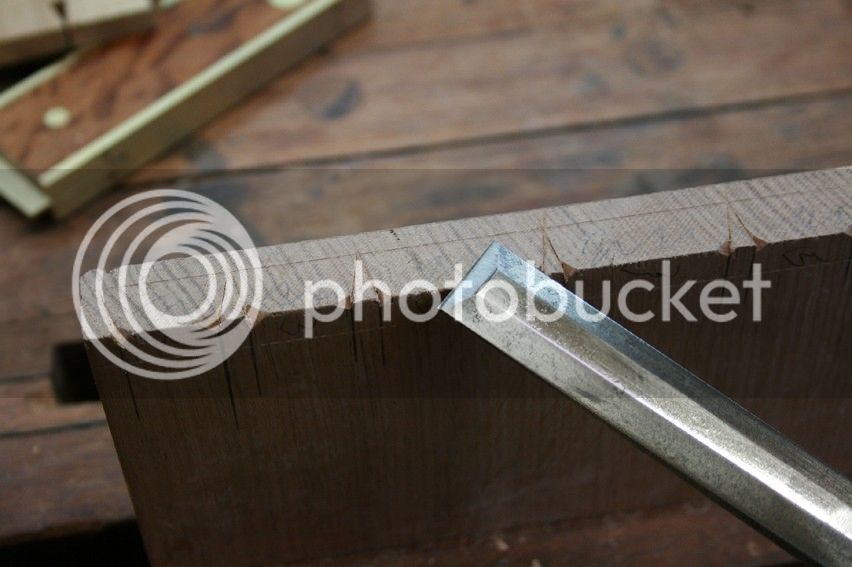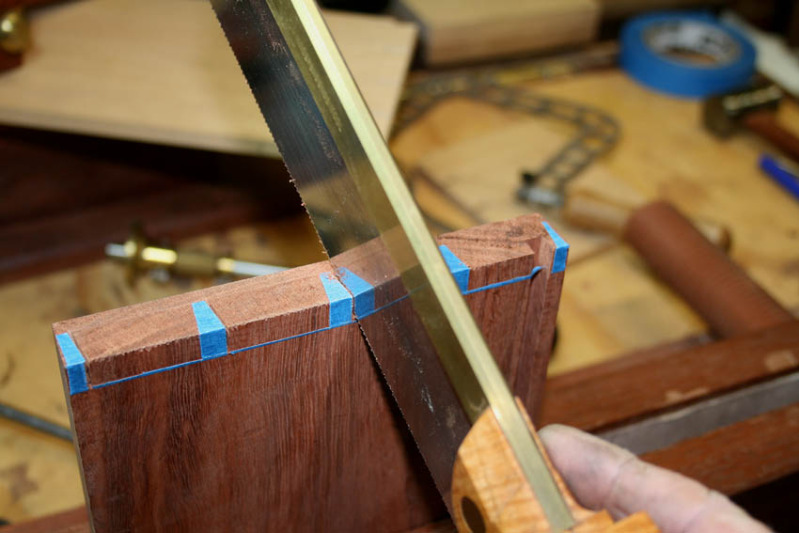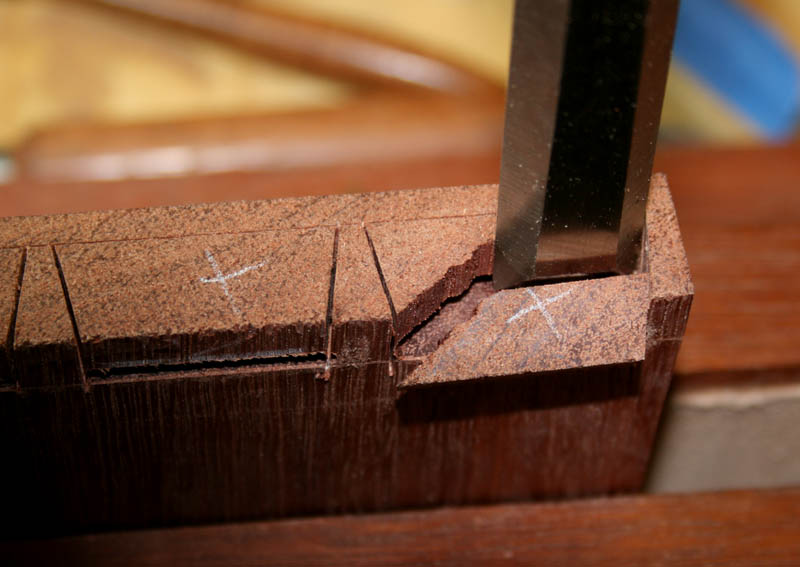Benchwayze
Established Member
Alf":3sz6nler said:Come now, Derek, that's a tad disingenuous. Either that or I think you should know someone was using your name on Sawmill Creek... :wink: Anyway, nice compilation of tips and tricks, Derek. Cheers.After all the criticism levelled at Rob Cosman's dovetails (a guy I think is terrific, by the way), perhaps we should see some examples from the forum members!! :shock:
fwiw, rather than a full on jig with clamping down and so forth, to aid my total inability to judge whether a chisel is truly plumb or not, I use a wee block of hardwood, squared up and held against the back of the chisel. e.g. Doesn't get in the way like even the smallest square tends to, but reassures me I'm not making a total Horlicks of the thing.To help, or start, some along the way, here are a few strategies for producing tight dovetails that I have found useful. The idea here is to add your own and build up as many useful tips as possible.
Like the rest block thingy, but how on earth do you resist using it as a handy sanding device? I just know I'd give into temptation (Yes, a weak and untidy bench user, I know. Learn better habits. You're right) BB's favourite tip* for holding the work is the old mitre clamp trick. Fiddly to set up for most things I reckon, but worth it for wider stuff.
And from both those pics you can see I'm easily resisting the urge to show-off my dovetails. Should have had a coupla closer tails at the corners, I know. But heavens, that old pine was a terror and I was glad to see the back of it. :lol:
Cheers, Alf
*See? Told you. He beat me to the post though; I had to find the pic.
Derek,
When you are chopping with the mallet and chisel do you stand at the end of the workpiece or at the side? :?:
John




































